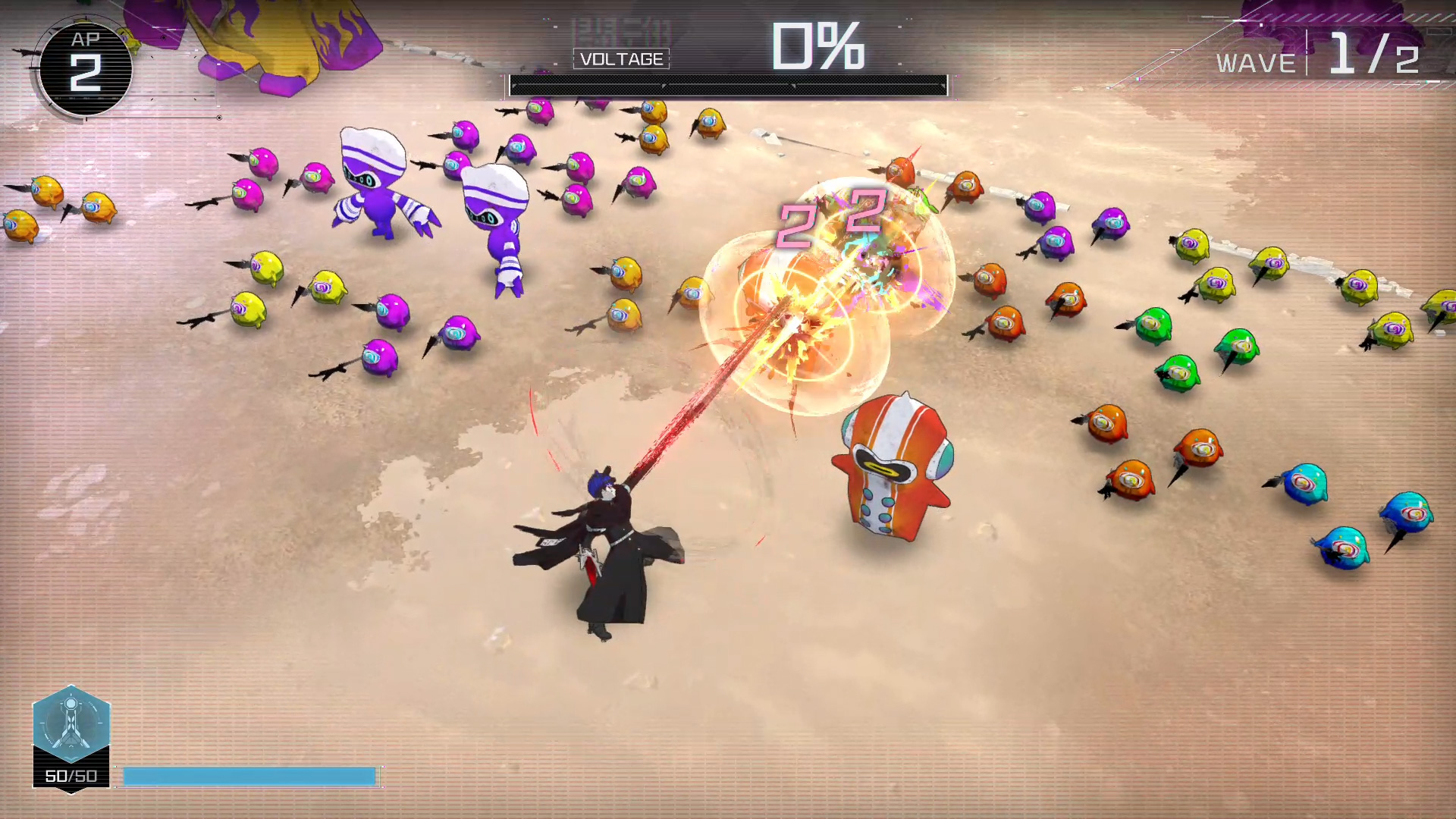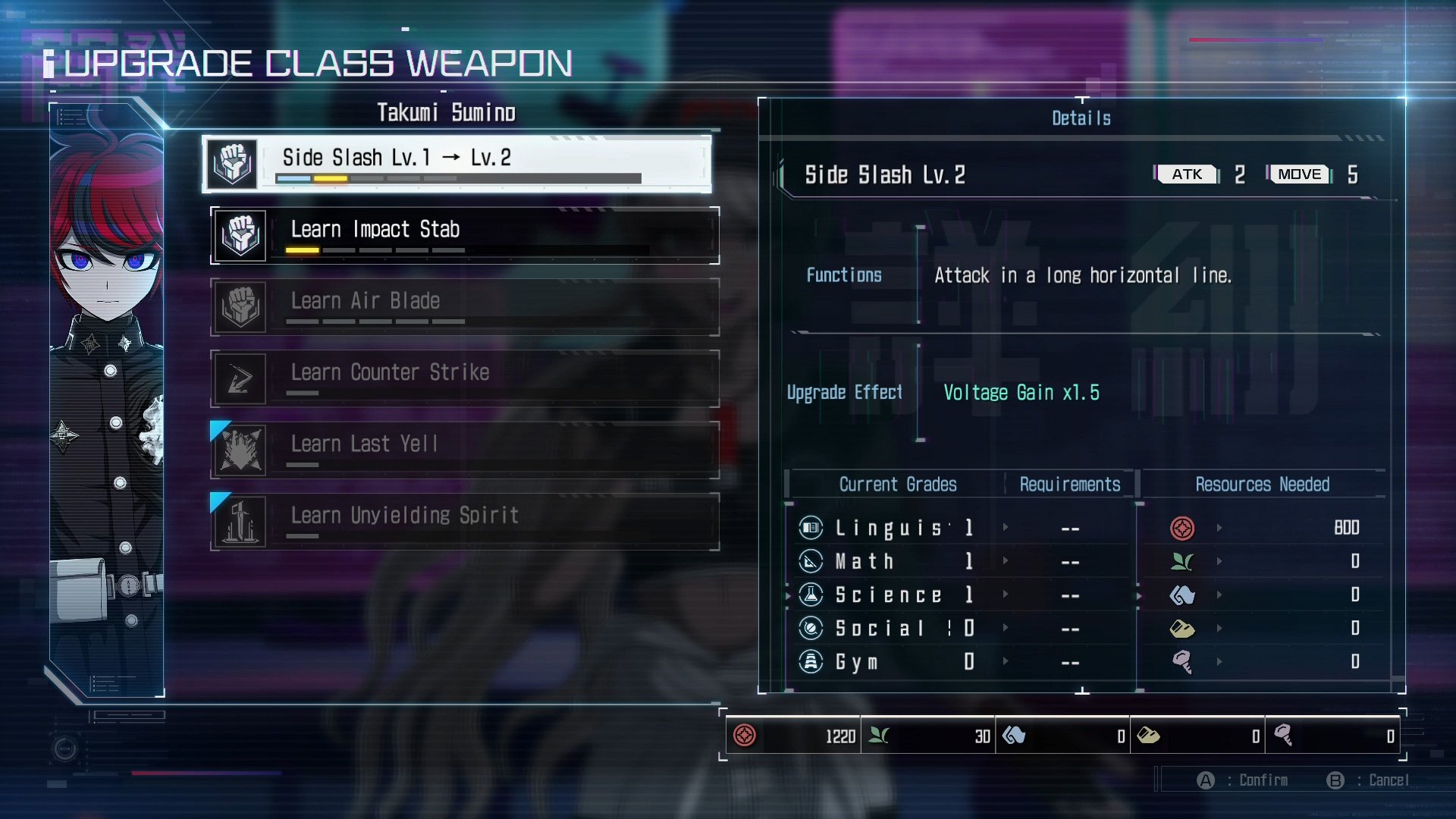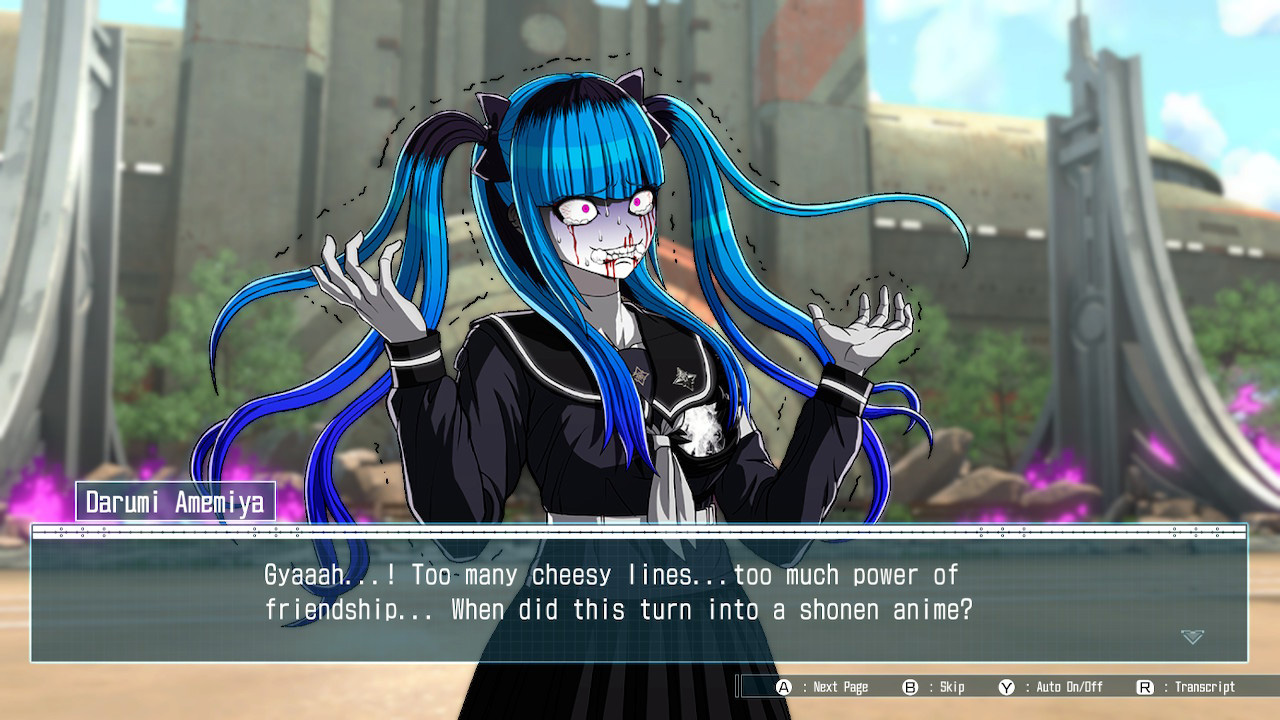Review: The Hundred Line: Last Defense Academy (Nintendo Switch)

There’s a lot I want to say about The Hundred Line: The Last Defense Academy, I just don’t know how to say it. This is partially because offering any kind of story detail would spoil the surprises that hit very early. It’s also because the premise and gameplay are so off the rails that it’s hard to wrap your head around everything.
But good Lord, what fun it is to try!
Published by Marvelous (XSEED), the game comes to us from Kazutaka Kodaka and Kotaro Uchikoshi—names you may know from the Danganropa and Zero Escape series, respectively. If so, that should give you some inkling of what to expect, but I liken The Hundred Line’s flow more to games such as 13 Sentinels: Aegis Rim and Yurukill: The Calumniation Games. Grab the demo, and you’ll quickly see what I mean.
The story centers around Takumi Sumino, a teenaged boy who’s become bored with life in the Tokyo Residential Complex—a domed city plagued with two unfortunate realities. First, the lighting is terrible; imagine living under a sky lit up like a high school cafeteria. That’s my complaint, though, not Takumi’s. His is that sirens occasionally announce a mysterious danger level, during which the residents must retreat to underground shelters. This includes Karua Kashimiya, a childhood friend Takumi swore to protect after she lost her father during such a raid.
When the two eventually find themselves above ground during an attack, Takumi finds his oath put to the test by a strange, ghost-like creature who tells him he can save Karua if he’ll just, you know, stab himself in the chest with a strange dagger called the Infuser. It’s not a spoiler to say he does this (we do have to get the game moving), after which he’s transported to The Last Defense Academy with a host of other high schoolers who also have no idea what’s happening.
Here, I have to start talking about the story. Half the fun of The Hundred Line is learning what’s going on, and that’s teased and twisted throughout the game. Quite often, when you think you’re about to figure something out, the game either goes in a different direction or finds a way to leave you dangling just a little bit longer.
The review guide provided by Marvelous (XSEED) included five slides worth of plot points we aren’t allowed to reveal; that has to be a record of some kind.
So, what can I talk about? Well, the Last Defense Academy is an actual school defending…something. Takumi and his fellow classmates aren’t told exactly what it is, just that it’s very important to humanity’s survival and that they’ll have to defend it for 100 days.
They’re also told they’re trapped on school grounds by “undying flames” that can’t be extinguished except in small sections with a special extinguisher. The good news, though, is that Takumi and the others can be brought back to life provided they die on school grounds (more on that in a bit).
So, they fight, right? Wrong. Confused and frightened, they do more arguing than anything else, with only a few of the combatants willing to step up…albeit not always for noble reasons. These students aren’t just eclectic, they’re bonkers straight away. The various personalities are not anime tropes, they’re purposeful caricatures of anime tropes, and they’re all so much fun. You know their character flaws are eventually going to receive a moment of exposition, but the writers are clever about this and use them in unexpected ways.
The cast members also get their own abilities to use on the battlefield. The enemies attack in waves, often requiring you to defend the academy on a Fire Emblem-like grid. Some characters move further than others, some have better defense, some offer important buffs, some are very tough against single targets, while others are more effective against groups of enemies. The nuances are numerous and complex, and being strategic with them is, of course, the key to victory.
It can actually be quite overwhelming early on, but two development decisions help you out.
First, you can restart battles from any wave, so bad decisions don’t force you back to the start. Second, you’re given the option to restart with your voltage meter jacked up to maximum. This meter allows characters to use special attacks that not only do significant damage but also provide you with more action points (AP) so you can get more moves in on your turn.
The coolest feature of combat, however, is that it’s often beneficial to kill off your own teammates. I mentioned that they come back to life, right? So, if a character is about to die, you can sacrifice him or her to cause extensive damage to the enemy while increasing the abilities of the remaining characters. The sacrificed character returns in the next wave or at the end of battle. Be careful who you kill off, though; you may need a specific specialty for the remaining enemies.
Thankfully, 100 days at the academy doesn’t mean 100 battles. Most of the time, you’re working through the game’s visual novel component and deciding how to level up your characters. There are perhaps too many ways to do this. You can create gifts for characters, hang out with them, study in a library, improve your weapons, and more. You can even engage in a random-chance board game where you can harvest materials for your various power-ups. It’s a lot to consider, and I wish the game did more to explain the impact of all the options.
I also wish the developers had done a better job of fleshing out the occasional persuasion mini-game. Here, you need to say the right thing in order to get someone to, for example, agree to fight. But the right answers are achieved by guesswork, and the game doesn’t tell you how many options there will be or when they expire. Perhaps to compensate, if you get an answer wrong, the event just starts over until you get it right. It’s a weird component that doesn’t need to exist.
Visually…well, the Aniplex logo appears when booting up the game, so you know how this game is going to look. It has a ton of style, with the graphics rising to match the game’s attitude and sense of humor. Speaking of which, The Hundred Line knows exactly what it is and mocks itself throughout. Some of the jokes may be a bit too meta, sure, but they’re still very funny, and that helps to move things along during the moments when the visual novel aspects carry on a bit too long.
Still, there wasn’t a moment when I didn’t have a blast playing The Hundred Line: The Last Defense Academy. And when it’s done, it’s not done. Your first playthrough is pretty linear, but subsequent sessions allow you to explore different story branches. Again, we’re p rohibited from detailing these branches, but I can say you’ll definitely want to work through them.
All this considered, The Hundred Line: The Last Defense Academy is my favorite game of 2025 thus far. Its anime-like violence and off-color sense of humor may not be for everyone, but the turn-based strategy and visual novel elements combine effectively for an over-the-top romp that will keep you on edge for all 100 days.









